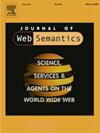逻辑增广生成
IF 3.1
3区 计算机科学
Q3 COMPUTER SCIENCE, ARTIFICIAL INTELLIGENCE
引用次数: 0
摘要
语义知识图(SKG)面临着可伸缩性、灵活性、上下文理解和处理非结构化或模糊信息方面的挑战。然而,它们提供正式和结构化的知识,通过推理和查询的方式实现高度可解释和可靠的结果。大型语言模型(llm)可以克服这些限制,使它们适用于开放式任务和非结构化环境。然而,法学硕士很难解释,而且往往不可靠。为了充分利用llm和skg,我们设想逻辑增强生成(LAG)将两个世界的优势结合起来。LAG使用llm作为反应性连续知识图,可以按需生成潜在的无限关系和隐性知识。LAG使用skg注入具有明确逻辑和事实边界的离散启发式维度。我们在集体智慧的两个任务中举例说明LAG,即医学诊断和气候预测。了解LAG的特性和局限性,这在很大程度上仍然是未知的,对于实现涉及隐性知识的各种任务,以提供可解释和有效的结果是至关重要的。本文章由计算机程序翻译,如有差异,请以英文原文为准。
Logic Augmented Generation
Semantic Knowledge Graphs (SKG) face challenges with scalability, flexibility, contextual understanding, and handling unstructured or ambiguous information. However, they offer formal and structured knowledge enabling highly interpretable and reliable results by means of reasoning and querying. Large Language Models (LLMs) may overcome those limitations, making them suitable in open-ended tasks and unstructured environments. Nevertheless, LLMs are hardly interpretable and often unreliable. To take the best out of LLMs and SKGs, we envision Logic Augmented Generation (LAG) to combine the benefits of the two worlds. LAG uses LLMs as Reactive Continuous Knowledge Graphs that can generate potentially infinite relations and tacit knowledge on-demand. LAG uses SKGs to inject a discrete heuristic dimension with clear logical and factual boundaries. We exemplify LAG in two tasks of collective intelligence, i.e., medical diagnostics and climate projections. Understanding the properties and limitations of LAG, which are still mostly unknown, is of utmost importance for enabling a variety of tasks involving tacit knowledge in order to provide interpretable and effective results.
求助全文
通过发布文献求助,成功后即可免费获取论文全文。
去求助
来源期刊

Journal of Web Semantics
工程技术-计算机:人工智能
CiteScore
6.20
自引率
12.00%
发文量
22
审稿时长
14.6 weeks
期刊介绍:
The Journal of Web Semantics is an interdisciplinary journal based on research and applications of various subject areas that contribute to the development of a knowledge-intensive and intelligent service Web. These areas include: knowledge technologies, ontology, agents, databases and the semantic grid, obviously disciplines like information retrieval, language technology, human-computer interaction and knowledge discovery are of major relevance as well. All aspects of the Semantic Web development are covered. The publication of large-scale experiments and their analysis is also encouraged to clearly illustrate scenarios and methods that introduce semantics into existing Web interfaces, contents and services. The journal emphasizes the publication of papers that combine theories, methods and experiments from different subject areas in order to deliver innovative semantic methods and applications.
 求助内容:
求助内容: 应助结果提醒方式:
应助结果提醒方式:


